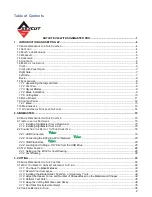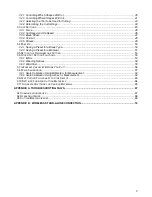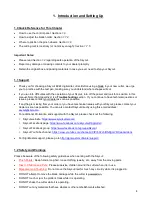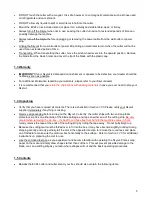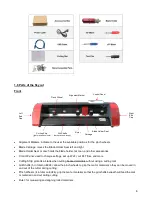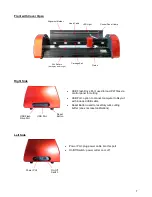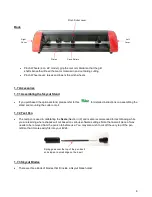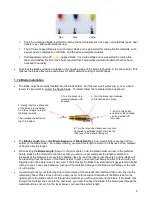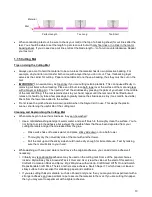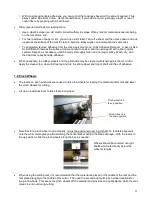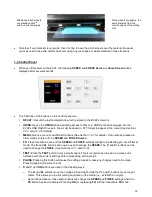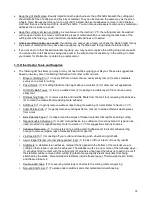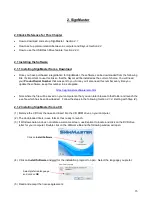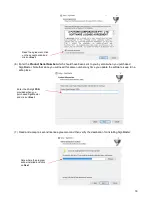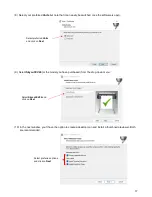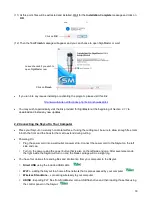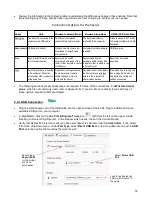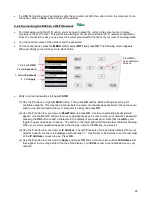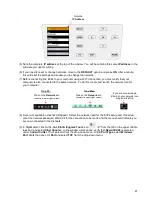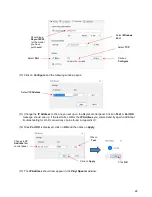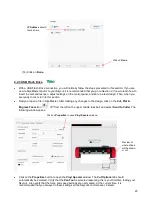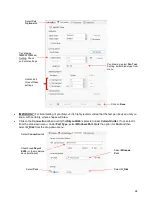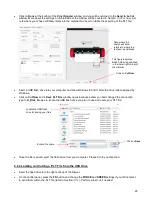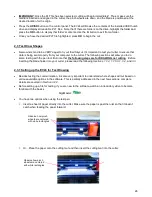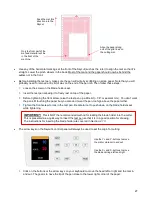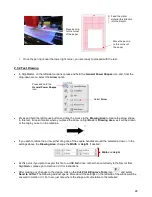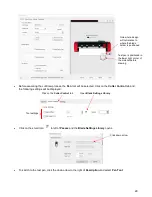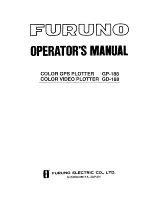
14
•
Keep the grit shafts clean. Equally important as the pinch wheels, the grift shafts beneath the cutting mat
should also be free of adhesive and tiny bits of material. They can be cleaned the same way as the pinch
wheels. Note: Do not pour cleaner onto a grit shaft. Instead, dab some adhesive remover onto a lint-free
cloth and then use the damp cloth to clean the shafts. You can also use tweezers to remove any material or
adhesive that is stuck to a shaft.
•
Keep the cutting mat clean and sticky. As mentioned in the
Section 1.7.5
, the cutting mat can be washed
with soap and water to remove small invisible pieces of material which are reducing the tackiness of the
cutting mat. After drying, you can add more repositionable adhesive, if needed.
•
Check your blade holder, as needed. If suddenly you cannot get a clean cut, check the blade holder for any
tiny slivers of material that may have been caught up by the blade and fed up inside the blade holder.
•
If you cut vinyl or other backed materials regularly, you may need to replace the cutting strip at some point.
You will be able to tell based on seeing deep cuts in the strip and an inconsistency in the cutting. Contact
your dealer for information on obtaining a replacement.
1.11 Other Useful Tools and Supplies
•
The following list has items you may or may not need while enjoying your Skycut. These are suggestions
based on twelve years of collecting information from other cutter owners:
Brayer or Rolling Pin: (1) to apply lint from a towel onto an overly sticky mat (2) to press materials
evenly onto a mat for cutting
Post-It Notes: (1) for setting blade/tool tip height above a material (2) for draw and cut applications
Old Fluffy Bath Towel:
(1)
to dry a washed mat (2) to apply an invisible layer of lint onto an overly-
sticky mat
Dishwashing Soap: (1) to remove visible and invisible fibers from the mat, thus renewing the adhesive
(2) to clean the mat well before adding more adhesive
Soft Brush: (1) to gently remove waste scraps during the washing of a mat. Refer to
Section 1.7.5.
Artist Palette Knife:
(1) to gently remove cut shapes from a mat (2) to scrape off small waste pieces
from a mat
Blue Painter’s Tape: (1) to tape around the edges of thicker materials that might slip during cutting
Repositionable Adhesives: (1) to add more adhesive to a cutting mat (most any brand or type can be
used, provided it is repositionable). Refer to
Section 1.7.5
for suggestions and instructions.
Adhesive Removers:
(1) to completely strip a cutting mat of adhesive (2) to disarm adhesive long
enough to remove large scraps of material that will not peel off
Lint-free Cloth: (1) for dusting off your cutter and cleaning pinch wheels and grit shafts
Awl or Paper Piercer (or other sharp pointed tool): (1) to pick or lift out a test cut to verify results
Stabilizers: A stabilizer is an adhesive material that is applied to the bottom of the material you are
cutting so that cleaner cuts can be achieved. The stabilizer works in one or more of the following ways
–
(1) provides firmer contact with the cutting mat (2) provides a final layer that does not need to be cut if
the stabilizer will be removed after cutting (3) prevent some slightly-elastic materials from being
stretched by the blade. Recommended stabilizers include freezer paper, Thermo-
web Heat n’ Bond,
and Steam-a-Seam 2.
Double-sided Tape: (1) For securing metal tags or charms to the cutting mat for engraving
Non-slip Shelf Liner: (1) To place under cardstock and other material when embossing
Содержание EV24 with SignMaster Pro
Страница 63: ...63 3 9 Test Cutting Flow Chart for the Skycut...


